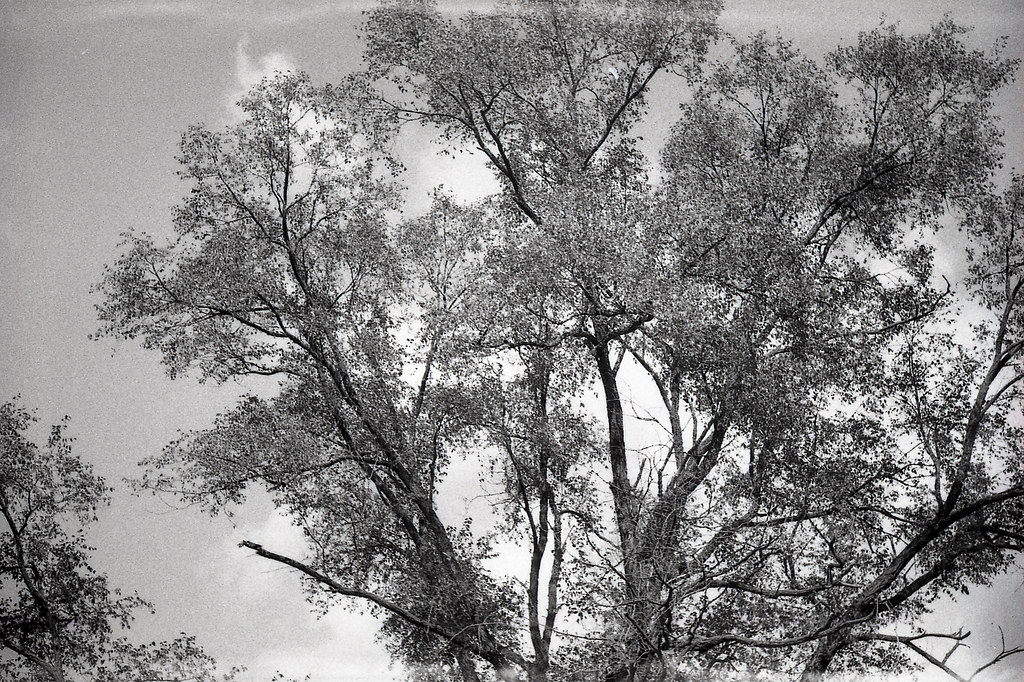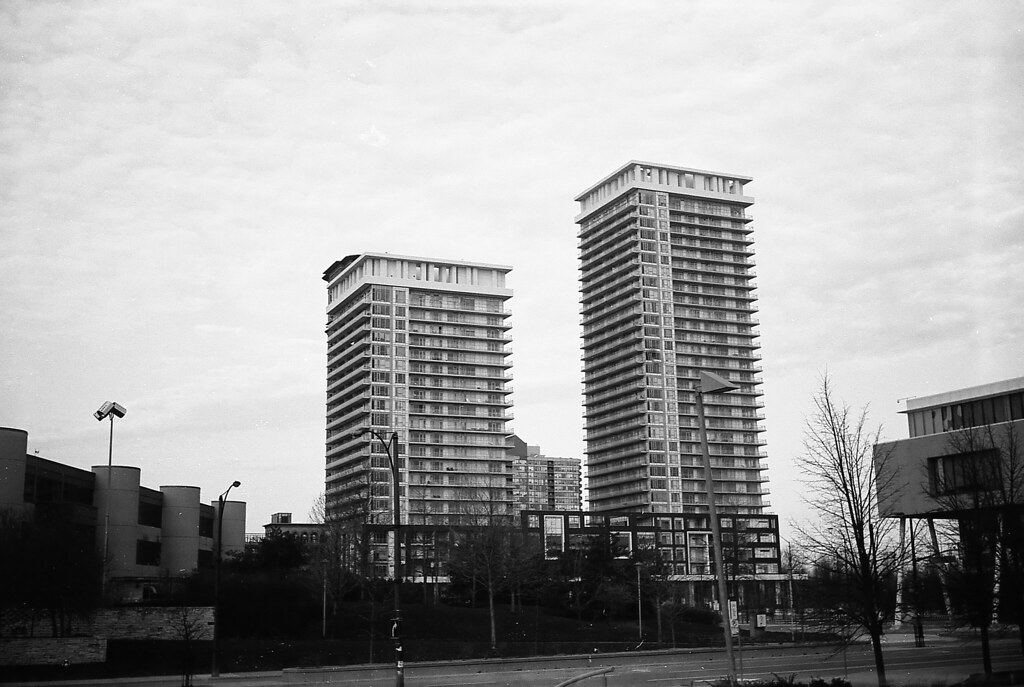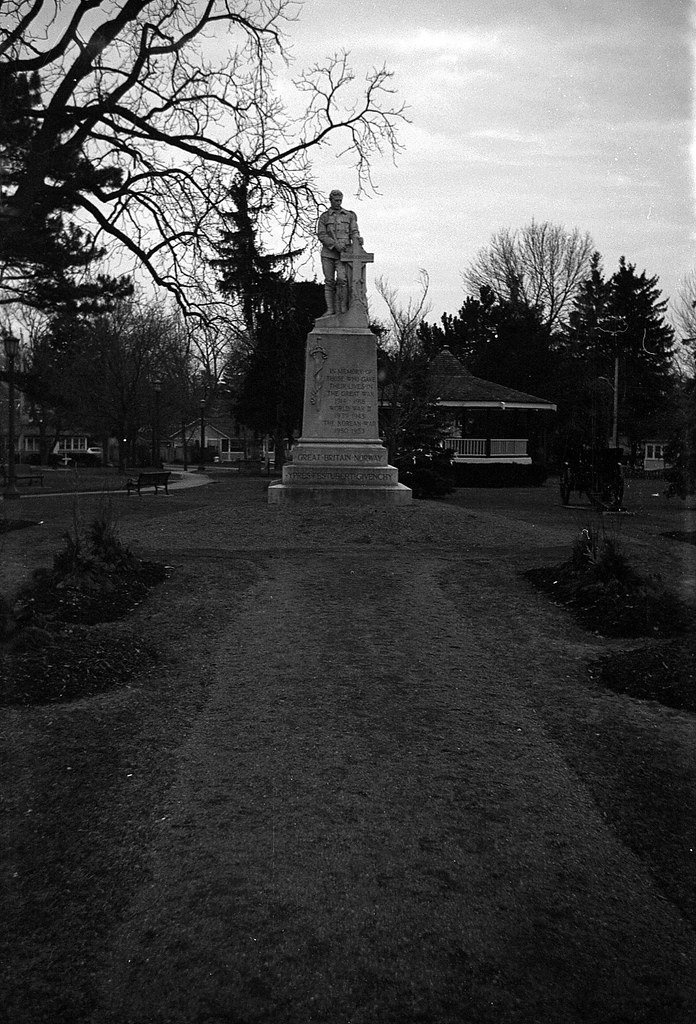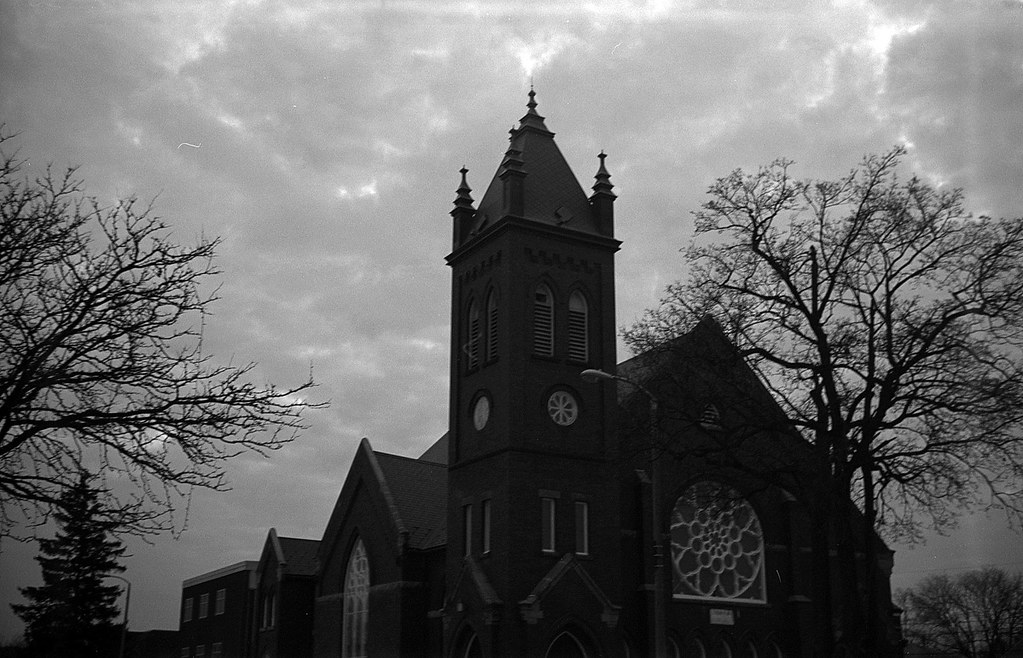There’s something strange about the Smena 8M, it wasn’t my first experience with Soviet cameras and certainly wasn’t going to be my last. But the Smena 8m made me both loved and despised the cameras from the Soviet bloc. The camera is simple to the point of being demining, a chunk of plastic that has little to offer a photographer. Other than a strange joy and annoyance in general operation. Every time I used it, I wanted to give it away, tossing more images than those I kept. Yet now looking back at the three rolls I shot through the camera the resulting photos aren’t too bad. And honestly, the only redeeming feature of the camera is the lovely Triplet lens. Thanks to Michael Raso for the gift of this camera way back in 2012 when I first visited the FPP studios on a trip to New York City and New Jersey.

Camera Specifications
Make: Lomo (ЛОМО)
Model: Smena 8m (Смена-8M)
Type: Viewfinder
Format: 135 (35mm), 36x24mm
Lens: Fixed, ЛОМО Triplet-43 4/40, 3 Elements/1 Group, f/4-16, 8 blades
Shutter: Lens Mounted Leaf Shutter, 1/15″ – 1/250″
Year of Manufacture: 1970-1995


Background
The word Smena, or Смена means “Young Generation” or “Relay” unsure how those two go together but then again I don’t speak Russian or Ukranian. The name itself gives the camera away for the main market, the youth. A simple use camera to help bring photography to the next generation. The first model, the Смена came out in 1953 produced by GOMZ (Gosudarstvennyi Optiko-Mekhanicheskii Zavod) which was among the oldest of all of the Soviet manufactures. The original model was a bakelite camera equipped with a Triplet T-22 40mm f/4.5 lens. In 1955 the Смена-2 was released and was the same as the original model but had flash synchronisation. In 1958 GOMZ decided to release two updated models, the Смена-3 and Смена-4. These were copies of the Смена-2 with a redesigned film advance, the 4 lacks the flash synchronisation and self-timer of the 3. However, these two were not known for their reliability and were quickly dropped in 1960 as the manufacture of the 1 and 2 continued until 1962. That year, GOMZ became a part of ЛООМП (LOOMP) Leningrad Optical and Mechanical Association of Enterprises. And a redesign of the Смена line saw a switch from bakelite to plastic and a whole new body style. Under LOOMP, the Смена-5 and Смена-6 were the first to use the new style. The two were the same, with main the difference being with the lens, the 5 having a T-42 40mm f/5.6 lens and the 6 having a T-43 40mm f/4. These proved popular enough that LOOMP decided to release a version of the Смена for international release. In 1963 the original Смена-8 was released. The 8 was a 6 with the T-43 40mm f/4 lens, but unlike the 6 the 8 did not require a take-up cassette and had the system cobbled on to rewind the film back into the original cassette. The earliest versions of the camera came with the GOMZ logo with the domestic versions having the Смена brand and export in the western name, Smena. Unless the version was marketed in the UK in which case these were branded Cosmic 35. A second version came with the LOOMP logo when LOOMP became Lomo (ЛОМО) in 1965 a third version with the new logo was released. Production of the Смена-8 ended in 1971. By this point, Lomo had also produced the Смена-9 which was an 8 without a self-timer and changed the branding to a printed rather than cursive text which was also found on the Смена-7. The 7, 8, and 9 would be the final models to use the body style started by the 5. In 1967 Lomo changed the body style yet again with the Смена-11 to be a much boxier angular style, so in 1970 they re-released the Смена-8 as the Смена-8m using the newer body style. There’s no difference between the original 8 and the 8m. The 1st version featured all the text in Cyrillic and only saw release inside the Soviet Block, the 2nd version would be for the export market. Like all the other versions of the camera there are several variants of each version, the most common of all the export models are the Version 3 PK3460. The faceplate features both western and Cyrillic characters along with the Lomo radio tower logo. The lens will also have GOST-ASA rating along the ring. These cameras flooded the market and remain today a popular camera and are easily found. Production ended in 1995 at the fall of the USSR.


Impressions
It’s a plastic box, that’s all there is to the camera, a plastic box. You might look and think the camera is something more advanced like a fixed focus, but it is viewfinder camera at best, a simple box camera at worst. The body has little in the way of controls, the rewind and shutter release and the film advance dial. Most of the controls are on the lens, which includes the shutter cock and exposure controls along with the focus. The plastic has a texture to it that makes you think of a custom leatherette covering, but no it’s still plastic. There is a bit of metal on the camera, mostly on the lens and the faceplate. Honestly, the camera is a nice piece to look at; it screams 1970 Soviet design. Like the blocks, you see in former Soviet territories, functional, brutal, nothing pretty, but functional. But far from being user-friendly, a tiny hard to operate aperture dial around the tiny front element, shutter speed around a lens collar, and focusing is your best guess. At least there’s a viewfinder? But it does little except having something to make you think you’re framing up your shot; it’s just a tube that sort of lines up with the 40mm lens.


Experiences
Here is where the camera falls, it is far too frustrating to use, and to think it was designed for youths to learn photography. Loading the camera is an exercise in patience, as the take-up spool is removable (so you can put in a take-up cassette), at least the camera back is a door and not fully removable. But I did manage to get it done, at least four times that resulted in images. Setting the aperture is difficult without some nails as the aperture ring is a dial around the front lens element. It was designed so that you set the aperture by the film speed you had loaded, which ran from GOST-16 to GOST-250 (approximately the same as ASA-16 to ASA-250) then set the shutter speed accordingly. But even these were slightly off, and I ended up under or over-exposing images because of the general inaccuracy. The focus was just as difficult, even with a rangefinder my final time I found that the images were slightly out of focus, but hey, by this point the Смена-8m is a toy camera, right? Once you took the shot, you first had to advance the film using a rather rough plastic dial and manually cock the shutter using a tiny lever on the lens body. Yeah, two-step process. As for the rewind, to do that you do need both hands as one will hold down the shutter release button while the second one uses a small metal rewind leaver. You have to remember the rewind function was added on because most other cameras could rewind to the source cassette. Forget the shutter button; you’re going to spread if not tear your film. Not exactly the easiest camera to use.


Optics
As much as I bash the cameras use, the images that you get right are pretty good. Now the Triplet lens design has three single elements and dates back to the late 19th-Century. A simple, inexpensive design that offered the best quality for the cost. And here is where the Смена-8m shines, the T-43 lens is perfect for the camera, images are sharp at smaller apertures and have little in the way of vignetting even when open to f/4. Now you are rather restricted by the f/4 being the fastest aperture and f/16 being fully stopped down but you get good results no matter what point you set the lens. While not too good with colour film, it sings when you have a contrasty black and white film loaded, frankly, my favourite shots were done with Kodak TMax 400 developed in Rodinal.


Lowdown
The Смена-8m is not a camera for everyone and proves that it is all about love. I frankly did not love the camera, and it showed, immense frustrations followed every time I picked it up and put it down. I did eventually give it away as it was originally a gift, and the guy who received it has produced some amazing results with the camera. Maybe I was thinking too hard? Either way, if you’re into cheap Soviet cameras or want something so wonderfully Soviet on your shelf then certainly get an 8m. But don’t spend too much money on them and don’t get a fake. For the most part you can have an 8m for 7$ on the cheap end up to 60$, but honestly, don’t spend that much unless they’re sending you a group of 8m cameras. A nice middle ground is 20-30$ depending on the condition and functionality. Remember these only cost 15 roubles in 1986. Now there have been some fake 8m (3rd version, PK3460 variant) withe different colour bodies; these are the fakes. But honestly, I wish I had taken more time with the camera and gotten to know it a bit better, and I might have come to enjoy the weirdness, but oh well. Despite everything, the 8m is a great camera if you’re into this sort of photography.


Further Reading
Don’t just take my word on the Smena 8m, you can check out the reviews by other awesome camera reviewers!
35mmc – The Smena 8M – Sometimes you just have to Play
Canny Cameras – Smena 8m Good Clean Plastic Fun
Photo Thinking – Smena 8m The Comrade for the Young Generation
Camera Go Camera – Lomo Smena 8m review
2 Comments